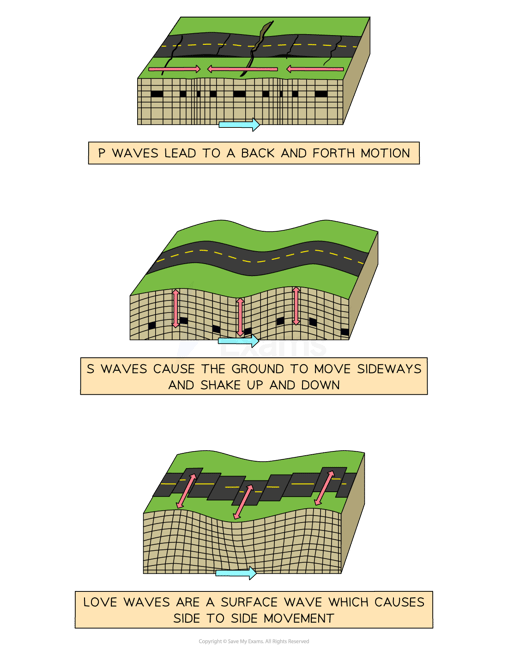Earthquake Waves & Hazards
- The movement felt during an earthquake is the result of seismic waves
- These are the released energy radiating through the Earth
- There are three types of seismic waves:
Characteristics of Seismic Waves
| Wave type | Characteristics |
| Primary - P waves |
|
| Secondary - S waves |
|
| Love - L waves |
|

Seismic waves
Primary and secondary hazards
- Every earthquake is unique but they have common hazards which are either
- Primary (a direct result of the earthquake)
- Secondary (a result of the primary hazards)
Primary and Secondary Earthquake Hazards
| Primary hazards | Secondary hazards |
|
Ground shaking Crustal fracturing (when the movement causes the Earth's crust to crack) |
Landslides and avalanches - the movement of the Earth may trigger the collapse of material down steep slopes Liquefaction - when the shaking causes particles in the ground to move further apart causing them to act like a liquid rather than a solid Flooding - caused by tsunami |


